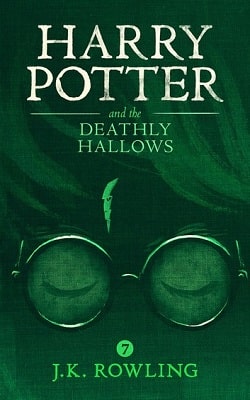He stepped inside. At first the scene was confusing. On the floor of the church, around the altar and here in the south transept, several huge pieces of wood were burning. Where had they come from? How had they produced so much smoke? And what was the roaring noise that sounded like a much bigger fire?
Cuthbert shouted: “Look up!”
Philip looked up, and his questions were answered. The ceiling was blazing furiously. He stared at it, horrified: it looked like the underside of hell. Most of the painted ceiling had already gone, revealing the timber triangles of the roof, blackened and blazing, the flames and smoke leaping and swirling in a fiendish dance. Philip stood still, shocked into immobility, until his neck started to hurt from looking up; then he gathered his wits.
He ran to the middle of the crossing, stood in front of the altar, and looked around the whole church. The entire roof was ablaze, from the west door to the east end and all across both transepts. For a panicky moment he thoughtHow are we going to get water up there?He imagined a line of monks running along the gallery with buckets, and he realized immediately that it was impossible: even if he had a hundred people for the job, they could not carry up to the roof a quantity of water sufficient to put out this roaring inferno. The whole roof was going to be destroyed, he realized with a sinking heart; and the rain and snow would fall into the church until he could find the money for a new roof.
A crashing sound made him look up. Immediately above him, an enormous timber was moving slowly sideways. It was going to fall on top of him. He dashed back into the south transept, where Cuthbert stood looking scared.
A whole section of the roof, three triangles of beam-and-rafter plus the lead sheets nailed to them, was falling in. Philip and Cuthbert watched, transfixed, quite forgetting their own safety. The roof fell on one of the big round arches of the crossing. The enormous weight of the falling wood and lead cracked the stonework of the arch with a prolonged explosive sound like thunder. Everything happened slowly: the beams fell slowly, the arch broke up slowly, and the smashed masonry fell slowly through the air. More roof beams came free, and then, with a noise like a long slow peal of thunder, a whole section of the north wall of the chancel shuddered and slid sideways into the north transept.
Philip was appalled. The sight of such a mighty building being destroyed was strangely shocking. It was like watching a mountain fall down or a river run dry: he had never really thought it could happen. He could hardly believe his eyes. It made him feel disoriented, and he did not know what to do.
Cuthbert was tugging at his sleeve. “Come out!” he yelled.
Philip could not tear himself away. He remembered that he had been anticipating ten years of austerity and hard work to put the monastery back on a sound financial footing. Now, suddenly, he had to build a new roofanda new north wall, and perhaps more if the destruction went on. ... This is the devil’s work, he thought. How else could the roof have caught fire on a freezing night in January?
“We’ll be killed!” Cuthbert shouted, and the note of human fear in his voice touched Philip’s heart. He turned away from the blaze, and they both ran out of the church into the cloisters.
The monks had been alerted and were filing out of the dormitory. As they came out they naturally wanted to stop and look at the church. Milius Kitchener was standing at the door hurrying them along to avoid a logjam, directing them away from the church and along the south walk of the cloisters. Halfway along the walk Tom Builder stood, telling them to turn under the arch and escape that way. Philip heard Tom saying: “Go to the guesthouse—stay well clear of the church!”
He was overreacting, Philip thought: surely they would have been safe enough here in the cloisters? But there was no harm done, and perhaps it was a sensible precaution. In fact, he reflected, I probably should have thought of it myself.
But Tom’s caution made him wonder how far the destruction might spread. If the cloisters were not absolutely safe, what about the chapter house? There, in a little side room with thick stone walls and no windows, they kept the iron-bound oak chest containing what little money they had, plus the sacrist’s jeweled vessels and all the priory’s precious charters and deeds of ownership. A moment later he saw Alan the treasurer, a young monk who worked with the sacrist and took care of the ornaments. Philip called him. “The treasure must be taken from the chapter house—where’s the sacrist?”
“He’s gone, Father.”
“Go and find him and get the keys, then take the treasure out of the chapter house and carry it to the guesthouse. Run!”
Alan ran off. Philip turned to Cuthbert. “You’d better make sure he does it.” Cuthbert nodded and followed Alan.
Philip looked back at the church. In the few moments his attention had been elsewhere, the fire had become fiercer, and now the light of the flames shone brightly in all the windows. The sacrist should have thought of the treasure, instead of saving his own skin so hastily. Was there anything else that had been overlooked? Philip found it hard to think systematically when everything was happening so quickly. The monks were moving to safety, the treasury was being taken care of—
He had forgotten the saint.
At the far east end of the church, beyond the bishop’s throne, was the stone tomb of Saint Adolphus, an early English martyr. Inside the tomb was a wooden coffin containing the skeleton of the saint. Periodically the lid of the tomb was lifted to display the coffin. Adolphus was not as popular now as he had once been, but in the old days sick people had been miraculously cured by touching the tomb. A saint’s remains could be a big attraction in a church, promoting worship and pilgrimages. They brought in so much money that, shamefully, it was not unknown for monks actually to steal holy relics from other churches. Philip had planned to revive interest in Adolphus. He had to save the skeleton.
He would need help to lift the lid of the tomb and carry the coffin. The sacrist should have thought about this, too. But he was nowhere to be seen. The next monk to emerge from the dormitory was Remigius, the haughty sub-prior. He would have to do. Philip called him over and said: “Help me rescue the bones of the saint.”
Remigius’s pale green eyes looked fearfully at the burning church, but after a moment’s hesitation he followed Philip along the east walk and through the door.
Philip paused inside. It was only a few moments since he had run out, but the fire had progressed very fast. There was a sting in his nostrils that reminded him of burning tar, and he realized that the roof timbers must have been coated with pitch to prevent their rotting. Despite the flames there seemed to be a cold wind: the smoke was escaping through gaping holes in the roof, and the fire was drawing cold air into the church through the windows. The updraft fanned the blaze. Glowing embers rained down on the church floor, and several larger timbers, burning up in the roof, looked as if they could fall at any time. Until this moment Philip had been worried first about the monks and second about priory property, but now for the first time he was afraid for himself, and he hesitated to go farther into the inferno.
The longer he waited, the greater the risk; and if he thought about it too much he would lose his nerve entirely. He hitched up the skirts of his robe, shouted “Follow me!” and ran into the transept. He dodged around the small bonfires on the floor, expecting at any moment to be flattened by a falling roof beam. He ran with his heart in his mouth, feeling as if he wanted to scream with tension. Then, suddenly, he reached the safety of the aisle on the other side.
He paused there for a moment. The aisles were stone-vaulted and there was no fire here. Remigius was right beside him. Philip panted and coughed as smoke caught in his throat. Crossing the transept had taken only a few moments but it had seemed longer than a midnight mass.
“We shall be killed!” Remigius said.
“God will preserve us,” Philip said. Then he thought: So why am I frightened?
This was no time for theology.
He went along the transept and turned the corner into the chancel, still keeping to the side aisle. He could feel the heat from the wooden stalls, which were burning merrily in the middle of the quire, and he suffered a pang of loss: the stalls had been expensively made and covered with beautiful carvings. He put them out of his mind and concentrated on the task at hand. He ran on up the chancel to the east end.
The tomb of the saint was halfway across the church. It was a big stone box standing on a low plinth. Philip and Remigius would have to raise the stone lid, put it to one side, lift the coffin out of the tomb, and carry it to the aisle, while the roof above them disintegrated. Philip looked at Remigius. The sub-prior’s prominent green eyes were wide with fear. Philip concealed his own dread for Remigius’s sake. “You take that end, I’ll take this,” he said, pointing, and without waiting for agreement he ran to the tomb.
Remigius followed.















